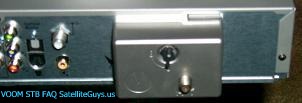I think we should put our emotions away before the topic gets out of hand. I believe that both of you guys have good points that been addressed in this thread one way or another. We can only judge based on what other posts and we can rationalize what is happening. Given that we have made the efforts of having people stay away from the diplexor. But, it might have being premature on our part to do so, but there was a reason to do so.
I think we are all mature individuals and can address each other without the emotions that drive us to write certain sentences that come out too strong. Let's respect everyone's opinion and let's keep doing the good things that this thread is all about. When we stay away from this, the thread becomes not so user friendly. Guys, lets move on and keep focus on topic. There are lot of people that need good information on this thread and don't want to go through other things that are non-related.
Guys, lets move on and keep focus on topic. There are lot of people that need good information on this thread and don't want to go through other things that are non-related.
Thank you...
I think we are all mature individuals and can address each other without the emotions that drive us to write certain sentences that come out too strong. Let's respect everyone's opinion and let's keep doing the good things that this thread is all about. When we stay away from this, the thread becomes not so user friendly.
Thank you...







